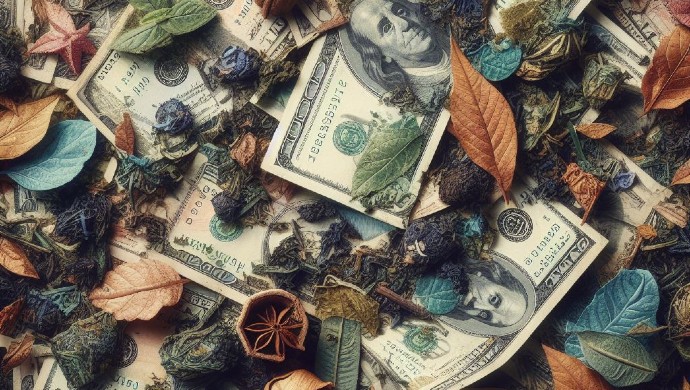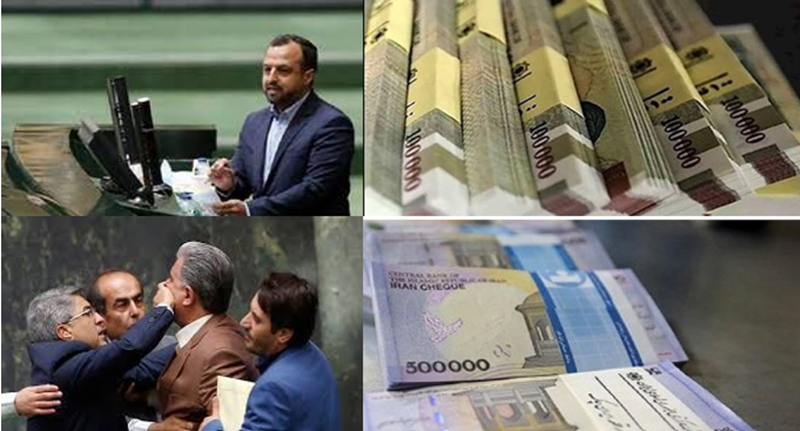

The head of the regime’s inspectorate uncovered that from 2019 to mid-2022, a commercial group received approximately $3.37 billion for importing tea and advanced printing and packaging machinery.
However, in a shocking twist, $1.4 billion of this amount has not been used for imports, with the company allegedly selling the government currencies at higher rates in the open market. This discrepancy is expected to surge to nearly $2 billion, highlighting a massive economic corruption.
This $3.7 billion scandal has cast a shadow over President Ebrahim Raisi’s government, known for its promises of economic reforms.
Ham-Mihan, in its piece “Pointing the Finger at the Claimants of Fighting Corruption,” and Setareh Sobh, through “The Seven-Headed Dragon of Corruption on the People’s Table,” have pointed out the irony in Raisi’s failure to curb corruption, which he had vowed to tackle.

Raisi’s ascent to presidency, marked by pledges of economic surgery and detaching essential goods from government currency, has paradoxically fueled inflation and aggravated government crises. Hossein Marashi, a regime expert, was quoted by Eghtesad News emphasizing the state’s inevitable defeat in its current trajectory. The regime, according to critiques, thrives on embezzlement and corruption, with Raisi neither capable nor willing to initiate change.
The scale of this scandal is put into perspective with Ebtakar newspaper’s reference to Iran’s $7 billion debt settlement with South Korea. Amidst a currency crisis, the corruption amounting to $3.37 billion is staggering.
Supreme leader Ali Khamenei, too, finds himself in a defensive position. Keyhan newspaper’s attempts to shield Raisi from blame have only intensified internal regime conflicts. Ham-Mihan remarked on efforts to divert public opinion from the gravity of the tea corruption scandal, criticizing the rush to judgment and exoneration in place of transparent information and judicial process.
Jamaran news website’s insights from a former Chamber of Commerce member highlight the impossibility of such large-scale corruption and currency manipulation without high-level official collusion and an extensive network.
Post the 2017 nationwide uprising, triggered by economic grievances, Khamenei acknowledged a deep-rooted corruption mafia within the regime, likening it to a “seven-headed dragon.” Yet, the battle against those benefiting from corruption remains daunting.
In conclusion, the “Tea corruption” scandal, dubbed as the largest economic corruption in Iran’s history, underscores the intertwined nature of corruption, crime, and warmongering in the mullahs’ regime. The growing consensus is that real change can only be achieved through an uprising led by the Iranian people and their organized resistance, seeking to dismantle the corrupt structures of power.

MEK Iran (follow us on Twitter and Facebook), Maryam Rajavi’s on her site, Twitter & Facebook, NCRI (Twitter & Facebook), and People’s Mojahedin Organization of Iran – MEK IRAN – YouTu







